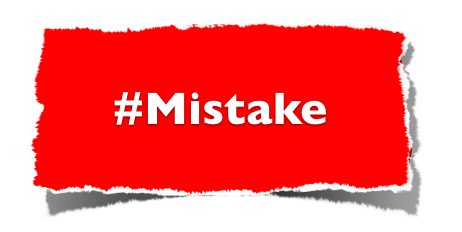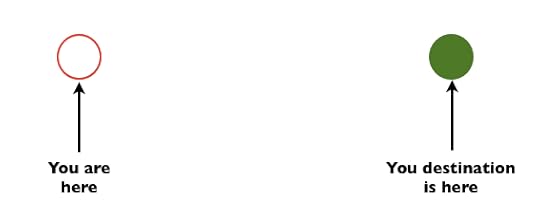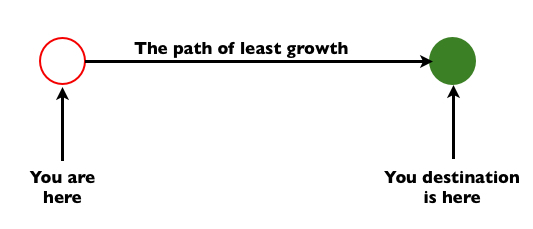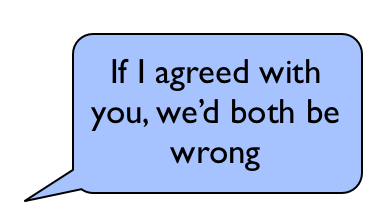Rajesh Setty's Blog, page 8
March 16, 2013
On Return on Relationship by Ted Rubin and Kathryn Rose
 I have known Ted for years and when I completed reading his new book, it was clear to me that nobody else could have written this book other than Ted. Ted lives the ideas that he and his co-author teach in the book.
I have known Ted for years and when I completed reading his new book, it was clear to me that nobody else could have written this book other than Ted. Ted lives the ideas that he and his co-author teach in the book.
I don’t know Kathryn personally but have heard great things about her from Ted.
I asked Ted a few questions surrounding the topic in this quick interview
RS: Ted, let’s get to the bottom – what is the ONE takeaway that you want for people from this book? Why?
TR: ROI is simple dollars and cents, ROR is about people. So here’s your new 4-word mktg strategy for 2013: Guess Less, Ask More… and always start with “How can I serve you?”
RS: What are three things that anyone can do to super charge ROR?
TR:
1. Don’t just Listen, but Hear.
Thanks to social media, brands can gather vast amounts of valuable information about consumer preferences… but to build relationships you need to go well beyond data gathering and actually hear, and react to what your consumers are sharing. True listening requires a willingness to place consumers’ opinions above the brand’s own (usually biased) view of itself, and to even make product/service changes based on that feedback.
2. Integrate Customer Service with your social presence.
Use social media for instant and ongoing engagement with your customers. Pay attention to them and address their needs early, often and publicly. Make sure your social team and customer service team are on the same page and communicate regularly and easily.
3. Focus on the relationship before the sale.
When a brand adopts the marketing philosophy that it is all about relationships, they automatically begin paying more attention to the consumer needs and preferences to learn who the consumers really are. Consumers who feel valued by a brand will in turn assign value to the brand by buying the product/service and passing recommendations on to their networks. The sale then becomes a natural part of the ROR instead of a “hard sell” effort.
RS: What are three things to avoid when building long-term relationships?
TR:
1. Simply clicking a button and assuming that a friendship has been born.
2. Stop communicating in the middle of a conversation. Just because it is a social platform doesn’t mean it’s ok to simply walk away and not finish.
3. Using social platforms as broadcast mediums and “not being social.”
RS: Tell me a little about Collective Bias.
TR: We are a social shopper media company that weaves organic social content into engaging, real-life stories to create millions of impressions leading to increased share of voice, SEO, and ultimately sales for brands and retailers. Through Social Fabric®, our proprietary community consisting of approximately 1,500 shopping-focused influencers with an aggregate multichannel reach in excess of 50 million, we connect shoppers with the brands and retailers shoppers use in their daily lives to drive conversations on a wide variety of social media platforms. Their stories build consumer engagement and brand loyalty, ultimately leading to sales conversion.
RS: What are two things you think most important about this new paradigm with regard to the scaling of relationships?
TR:
First: Welcome to the ‘Age of Influence,’ where anyone can build an audience and effect change, advocate brands, build relationships and make a difference.
Second: Relationships are like muscle tissue… the more they are engaged, the stronger and more valuable they become.
About the Authors:
Ted Rubin is the Chief Social Marketing Officer of Collective Bias a Social Shopper Media Company that drives retail sales through the coordinated creation of social media stories. He is a leading social marketing strategist and in March 2009 started using and evangelizing the term ROR, Return on Relationship™.
Kathryn Rose is an award-winning, best-selling author, speaker and social media strategist and trainer with clients ranging from multi-million dollar corporations, to small business owners and entrepreneurs. Kathryn has a 20+ year career in sales and marketing that includes successful track record of using a collaborative mindset to increase sales.







March 11, 2013
You made a mistake. Now what?
Everyone (no exceptions) makes mistakes and most people don’t know how to deal with themselves after they made a mistake. I was one of them and I am still learning.
For a long time, I used to have a roller coaster ride when it came to how I dealt with myself every time I made a mistake. Sometimes I was proud of myself with the finesse of my post-mistake-behavior but most of the time, I simply would wreck myself with internal blame and internal shame.
At the core, I simply hated myself for making mistakes.
The quest to be perfect was probably the greatest imperfection.
Early accomplishments (published novelist by age thirteen, six books by seventeen, state ranks at public exams) were all good on the outside by they presented a double-edged sword. If I had to continue to stand-out, I had to take risks and if I took risks, there was a good chance that I would fall flat on my face. There was a lot of stress about deciding to-risk or deciding not-to-risk.
I chose the option of taking risks. The journey begain and risks were taken, AND mistakes were made time and again. The exterior calm was generally accompanied by an interior storm.
Luckily, I learned how to deal with mistakes. I shudder to think of consequences for the alternate scenario.
Source of Learning
The big learning came from the world of philosophy. In fact there were two sources – linguistic philosophy and stoic philosophy.
Thanks to Stan Leopard for introducing me to the journey of linguistic philosophy, the world has never been the same again. At the core of linguistic philosophy, we learn that we create our world with our words. That is all there is – the words we choose. The words are what creates our world.
The core of stoic philosophy is an eternal quest for tranquility. It’s as simple as that.
Combine the two and you can create magic.
The Lesson
I won’t go into the details but now I have a simple three step process to deal with mistakes:
1. Set aside my ego and acknowledge the mistake: Honestly, nobody is a superman and wearing a mask like we are one won’t help us one bit. Whenever I make a mistake, I get to acknowledge it first. The faster I do it the better it is. It is hard to admit it but once I do, a big weight is removed from my shoulders.
2. Identify the lessons for future: Every mistake also adds to experience – at least we know what not to do. The best way to “learn” the lessons is to start by “writing them down” on a piece of paper.
3. Choose not to pay the price twice OR get back on feet again: I have paid the price (consequences of making that mistake) already but spending any more time other than #1 and #2 above will be to pay the price twice. Easiest way to get out of it is to say “This is not the first time and this won’t be the last time that I will make a mistake.” The only sane thing to do is to see how I can help reduce the pain from the mistake. For that, I need to take action. Now!
Finally…
I am an eternal work-in-progress and I am sure you are too. If you take real risks, then you can be guaranteed to make mistakes. If you have never made mistakes, chances are that you have never taken real risks. The fear of making mistakes is not the reason for you to avoid taking real risks. Rather, learn to deal with owning up the mistakes and moving ahead.







March 10, 2013
The path of least growth
Suppose you know where you want to go
AND
Suppose you know where you are now.
It seems like all you need to do is to get the shortest path from where you are to where you want to go. In general, it’s called a “taking a shortcut” as the shortest path from point A to point B is only possible in ideal conditions. It’s a good thing only in one scenario and most other times a quest for the shortest path is a recipe for disaster.
Let me explain.
Reaching your destination (let’s call it Point B) is only part of the journey. What transformations happens to you along the way is where the magic really is. The shortest path is probably the one with least resistance and in turn is the path of the least growth.
The fundamental rule that never changes:
No Resistance = No Growth
The nature of the path you take to your destination will determine two things:
a) The price you pay to reach the destination
b) The investment you make in yourself to reduce the price you pay next time.
When you are young, your destination (Point B) is generally something that’s achievable (unless you are super lazy) and the competition is not that great. Sometimes there is no competition – and there is no penalty for being “late.” Think about your earliest years when you learned to crawl, walk, talk, run and jump. It’s not like people would be super concerned if you were “late” by a few weeks as compared to others of your age.
Professional journey is different. The “Point B” for first several years seems hard but it’s nothing compared to what it is once you reach 40. The competition is fierce and you need to have “paid” the price to “become” that someone that has a decent chance of winning. Just like you can’t exercise on a single day to make up for the lack of exercise for the whole of last month, you can’t become that someone in hurry when you just need that extra capacity.
Every time you choose to take the shortest path available, you are robbing yourself of the opportunity to become someone better. All the discounts of today will add up as a penalty for tomorrow.
The Buddhist quote (courtesy of David Burwen) should serve as a guiding light:
“When deciding among opportunities, choose the most difficult path”
And, the one scenario where this will work?
You are still thinking about that?
It was a trick statement: there is none!







February 20, 2013
Interview with Sunil Kanderi on launching Mokriya’s Craigslist App
 I have been watching my friend Sunil Kanderi and his team innovate, imagine, ideate, iterate and implement the Craigslist app for months and finally, today it’s getting released. Here is a quick Q&A with Sunil on the app and more.
I have been watching my friend Sunil Kanderi and his team innovate, imagine, ideate, iterate and implement the Craigslist app for months and finally, today it’s getting released. Here is a quick Q&A with Sunil on the app and more.
About Mokriya: Mokriya is a design-focused mobile app strategy and solutions company based in Silicon Valley. It has become a go-to mobile app developer for high-tech, consumer-facing companies like Path, Hipster, Sidecar etc and for world-class brands like Swarovski Crystal and SeaWorld. Mokriya is trusted by startups and established enterprises to deliver high-value mobile applications of impeccable quality. Mokriya Craigslist is the company’s first Mokriya-branded application.
[Disclaimer: I have been involved with Mokriya since it's inception and Sunil is a personal friend]
Click here to view the embedded video.
RS: What was your inspiration for building a Craigslist app?
 SK: Many of the existing Craigslist apps today are clunky, hard to navigate and not an enjoyable experience. It is ironic that Craigslist, a Top 10 website in US, with 50 billion page views a month, does not have a decent mobile experience. We decided to tackle this and create a compelling Mobile experience for craigslist users.
SK: Many of the existing Craigslist apps today are clunky, hard to navigate and not an enjoyable experience. It is ironic that Craigslist, a Top 10 website in US, with 50 billion page views a month, does not have a decent mobile experience. We decided to tackle this and create a compelling Mobile experience for craigslist users.
The Mokriya Craigslist app is an effort in re-imagining craigslist from the ground up using Mobile centric design principles. We’ve created an innovative vertical tab UI so users easily browse the entire Craigslist directory with just two taps. This is something you won’t see in any of the current mobile apps out there. We’ve designed Mokriya Craigslist to be completely intuitive and I’m confident that once people see, touch and experience Mokriya Craigslist, they won’t want to use anything else.”
RS: What is the contract that you have with Craigslist?
The Mokriya Craigslist app was developed through an official license with Craigslist, it can be used across all 50 U.S. states and any of the 700 cities in 70 countries served by Craigslist. We have nothing but positive experience in dealing with craigslist as tried to obtain a license for using their data.
RS: What are your top features of the Mokriya Craigslist app?
Touch-centric Interface: Mokriya Craigslist brings all of Craigslist’s categories and search features directly to users’ fingertips. All content can be accessed within two taps.
Create Craigslist listings with images in minutes: it is the simplest, most enjoyable Craigslist posting experience available and it takes only a minute or two for most posts using an iPhone or Android smartphone.
Automatic search alerts: Use Mokriya Craigslist to continually search and deliver new items that match your needs and automatically alert you when they become available. Automatic alerts help ensure that users don’t miss out on that perfect used car, an apartment listing or other items.
RS: Where will this app be launched?
SK: Mokriya Craigslist is immediately available across 50 U.S. states and any of the 700 cities in 70 countries that Craigslist serves today. The app makes it easier and faster to find and sell stuff from anywhere.
RS: What is the cost of this app?
Browsing and searching on Mokriya Craigslist is now available for free on both the App Store and on Google Play. For a one-time $0.99 fee, users can upgrade to Mokriya Craigslist Premium to post listings, receive alerts and favorite items.
RS: Do you plan to support this app on any other platforms? How about an iPad app?
The app is supported on iPhones and Android phones. We are working on redesigning the app to use all the real estate on an iPad. It should be out in the next few months. Currently, we plan to limit release to these platforms.
RS: Where can I get more information about the app and company?
For more information or to view a demo video of the new app, please visit: http://craigslist.mokriya.com.
RS: What’s brewing next?
We have some fantastic ideas for future apps. One thing will be common among all of them – Stunningly Beautiful and performant apps, with utmost importance to user centric design.







February 14, 2013
Why MANY smart people defend themselves aggressively
The question: Have you seen any of your smart people defending them or their actions aggressively?
The BIG question: Have YOU defended yourself or your actions aggressively?
I was recently at a pitch session where one of the founders gave a sub-optimal pitch and got sub-optimal ratings for his pitch. His first reaction – the judges don’t know the space well enough to judge him. In other words, he was right and the judges were wrong. The person really believed in what he said. Really that belief was a bigger problem for me. The moment you defend and believe that you are right you close any avenues of improving yourself. If you are right, then what else is there to change, right?
I see this all this phenomenon all the time and I have been guilty myself several times.
Why do you think this happens – why do MANY smart people defend themselves aggressively for their own detriment?
Reflect on your own case if you are guilty of this crime.
Here are some reasons (in no particular order) and I am sure you can add a few more:
1. You want to avoid short-term pain: You need to defend arises only when there is an opposing point of view. You feel compelled to defend because, in your mind, not defending is to agree that your point of view was wrong. Admitting to that will immediately introduce short-term pain that you want to avoid BADLY.
2. You cringe on future pain associated with change: You are smart and you can see ten steps ahead. Not defending would also mean that you are required to “change” your viewpoints in the near future. That is pain waiting in the wings for you. You want to avoid the future pain so your best defense is to defend your point of view.
3. You want to “win” that game: Sometimes this becomes a game and being smart, you want to “win” that game. You end up trying to win even at the expense of actually “losing” it in the long run.
4. You (unnecessarily) make it personal: What they are opposing is your point of view. For whatever reason, the line between you and your point of view blurs and you make it personal. Once you make it personal, it goes downhill very fast in your mind first and then it goes downhill in reality.
5. You start focusing on the messenger: This is similar to #4 (where you thought the focus was on “you”) but here you start focusing on whether the messenger is qualified to give that message (opposing point of view). Your judgment on the message quality gets colored by your assessment of the competence and credibility of the messenger to send that message.
Now, how do you get out of this?
It is a two-step process:
1. Acknowledge: If you or someone you know can relate to this, the first step is to acknowledge that you (or they) are in a trap.
2. Stop taking yourself seriously: Checking your ego at the door is a (very) good thing







February 13, 2013
Do you think a rose is beautiful?
While coming back from his swimming class, I asked Sumukh a simple question – “Do you think a rose is beautiful?” He said “Yes” immediately and looked at me as if I was asking about something super obvious.
I followed up with another question – “Sumukh, do you want to think about your answer again? Did you forget about the thorns surrounding the rose? Do you think a rose is still beautiful?”
Sumukh thought for a brief moment and said, “Yeah, there are thorns but I think the positives outweigh the negatives by a wide margin.”
I am sure pretty much everyone would have some reason to justify that a rose is beautiful even though it is surrounded by thorns.
Now, switching over to people.
What do you think?
Do you focus the “rose” in them or do you do you focus on the “thorns” surrounding that “rose” in them?
Why focus on the “thorns” instead of the “rose”?
Well, it may be convenient to focus on the thorns because most people around you are focusing there OR you might just want to feel good that others have thorns too or. Whatever may be the reason, it is tempting to notice and focus on the “thorns” out there.
But, you also know that you HAVE A choice!
This Valentine’s day, why not make a pact to see the “rose” inside of everyone that you meet?
Photo Courtesy: Rose by Manuela Salzinger







February 8, 2013
The Ultra-short Course on Seduction
How can you seduce someone?
Important Note: With the Valentine’s day around, the title can be misleading. No, I am not talking about romantic kind of seduction – I don’t claim to be an expert on that and I am happily married for the last twenty years – so I guess it does not matter either way. I am talking about seduction in business.
Well, back at it again – How can you seduce someone?
The answer – you shouldn’t try to do that. They will be seduced on their own based on the following factors:
Who you are to them
What you bring to the table (your product, offering, possibility, opportunity)
How you bring that to them (the story you tell)
Your timing (It matters to them but is it the right time for them)
How well do you stack against other available options?
What are the additional costs involved to engage with you (including the cost of mindshare)
If it all looks complicated, here is the skinny version:
The level of seduction is directly proportional to their assessment of positive possibilities your products and/or services to them amongst all the available (and comparable in cost) options
Since it’s an ultra-short course, I won’t go into all the details but will give you an overview of what it takes to create an automatic seduction.
Assumption: You have reasonable amount of credibility with the other person and the timing is reasonably right.
1. Increase the expectation to reality gap positively:
Usually people do this reverse – they create a big enough expectation and the reality is not that colorful. If the gap is negative, everything fails for this attempt but also pushes you back on anything else you bring to them in the future. However, if the expectations are set right and the reality is way more colorful than what they are expecting, you opened first door to seduction.
[ Note: Read about The Niagara Factor for more details ]
2. Let them do the talking:
If “overwhelm” is your weapon to seduction, you will fail miserably. if they are not involved, they won’t be seduced. You have to be master at engaging in a conversation not in delivering a sermon. The more they talk, the more they get involved. Plus, if you don’t listen, you don’t get realtime feedback to know whether you are going in the right direction or not.
3. Don’t drag them, guide them along:
Learn to sell your ideas via mental breadcrumbs. What can you do to guide them to a place where they are seduced? You have to take them through a journey that will go through the following stages:
A. The current situation is not optimal on one or more levels
B. The gaps from the current situation to the optimal situations are clear now.
C. The gaps can be filled with reasonable costs and effort on their part NOW or in the near future
D. Bonus: What you are bringing to the table APPEAR to be much more compelling compared to other available options in the marketplace
E: Bonus: They will wonder how work can happen without having what you are bringing to the table.
4. Show, Not Tell:
Telling is easier compared to showing it. If you remember your car buying experience, they usually ask you to take the car for a test drive. Why? because they want you to “experience” the car yourself. It is a much better option compared to an hour-long lecture on why you should buy the car. The same concept applies everywhere. Think about what you can do to “show” what you bring to the table.
5. Structure Your Narrative to Induce Action
Your narrative is what transfers your story from your mind to their mind – hopefully in a compelling fashion. A little bit of creativity will help a LOT here. Structuring your narrative is an art that is priceless.
[For an example, read: This car wash is free ]
6. Watch Out for the Seduction Signals
The biggest seduction signal is the statement – “Tell me more..” and you typically get that if you have an element of mystery thrown into the mix. If you don’t get a clear seduction signal, pressing hard on your current approach won’t help much. You have to think of another angle.
7. The Long-Term Seduction Litmus Test:
If you have truly seduced someone, you win but they WIN way bigger than you. I am not talking about they feeling that they won – that is bordering manipulation. They need to actually win big or else the seduction is short-lived and actually a wasted effort.
All the best!
Photo Courtesy: Doug88888 on Flickr







February 6, 2013
The Art of Graceful Disagreement
Disagreement is hard and graceful disagreement is an art that you MUST master.
Have you been in a situation where:
You want to disagree but you don’t know how the other person will feel so you end up agreeing to something that you don’t buy-in
You want to be a good sport so you go along even if you don’t agree to a proposition
You don’t have the courage to disagree so you end up agreeing to something
You don’t know how to disagree
You think you don’t have an alternative to offer so you agree to what is being offered.
You think you will sound silly if you disagree as all others have agreed to what’s on the table
If you can relate to one or more of the above, then this blog post is for you.
Agreeing to something when you don’t fully believe in it is not helping the other person as your heart is not there. That does not mean that things will always go as per your wishes. No, that’s not the point. In fact, as you grow and learn, there will be LOTS of things that you are not aware of. What is obvious to those with experience maybe rocket science for you. You understand where I am coming from – and you want to learn the gentle art of disagreement. You want your voice to be heard.
Here are some ideas to help you:
1. It starts with yourself:
Your mind is an amazing machine. It can imagine the worst possible scenarios in matter of minutes. It can paint the picture of an impending doomsday about your relationship – all triggered by your disagreement. So, the first step with all these things is to come to terms with disagreements – it is OK to disagree as long as you do it with grace. The second shift in the mindset is that you don’t “win” if you make them agree to what you proposed AND you don’t “lose” if you agree to what the proposed.
2. Ask for more details:
When you don’t agree with something especially when you totally believe that it’s flawed thinking, you start by asking for more details about their plan. Don’t even suggest that you don’t agree with what’s presented – just prod for more details so that they start thinking through the proposition in greater detail. If you know how to ask good questions, soon they will discover the flaws in what they proposed and you don’t have to disagree to make them think about alternate options.
3. Ask them for a contrarian opinion(s):
Why should you break your head if you can gently ask them break their head on their proposition? Simply tell them something like this – “Hmm.. this is very interesting. I am sure you have thought about what are the holes in this plan. Where all do you think this might go wrong. I am asking so that we are well prepared and not bllindsided.” When they start giving out the negatives of the plan, ask them to expand on the negatives a bit more. They will help you by giving you all the ammunition you need to disagree
4. Amplify the alternatives:
Ask them what other options did they seriously consider before reaching the current conclusions. This is where you look for amplifying the alternatives rather than disagreeing with what is being proposed. When you like one of the proposed alternatives, start getting more buy-in for that alternative so that “it” becomes a viable contender on the table.
5. Go back to the drawing board:
It is easier to get to an alternate path when you start revisiting your goal. Sometimes we get mired in the details so much that we forget the real purpose. When you go back to the drawing board, you can re-emphasize on the all the criteria the proposed solution or approach should satisfy to make it a viable proposition. Once you elicit the criteria, start going through each item in view of the proposed solution. If one or more criteria fails to be satisfied, you got an opening for your argument.
6. Walk in their shoes for a short while:
If you blurt out your disagreement the moment you hear a proposition, the message you are sending is that you didn’t understand their point completely – you are disagreeing prematurely. The way to avoid that is by walking in their shoes for a few minutes. Where are they coming from? What led them to reach their current conclusions. As you walk in their shoes, the “why” behind the current proposition becomes clear. This will help you put forth YOUR argument in a much better way.
7. Shift the focus from “them” to “that”:
The fundamental reason why disagreements are hard is because people tend to make it about them and not the issue at hand. When you disagree without grace, the lines start to blur – are you disagreeing with “them” or with “that” approach? While long-term relationships will greatly help as cushions against ego-blow-ups, you need to learn to disassociate the person and the issue very quickly. You are not always in a situation where you have long-term relationships to the rescue. So think about how to gracefully disconnect “them” and “that” issue – the faster you can get there, more open they will be to listen.
What else has worked for you?
Bonus: Remember that not all battles are worth fighting. They can’t get it right all the time and neither can you. Knowing this will help you to be more compassionate to what is being discussed.
Photo Courtesy: Two Cows by Fuzzy Vision on Flickr







February 5, 2013
Mini Saga #127 – The Search
Mini Saga #127 – The Search
“My companion should be someone who will put more life in me” – Mark was frustrated. Years had passed by and he had no luck. So, when Jim mentioned he had found someone who could put more life in Mark, it was pure delight. “Simple,” Jim said, “Look in your mirror.”
When the answer lies within, searching outside won’t help.
Note:
1. A mini saga is a story told in exactly 50 words. Not 49 or 51 but exactly 50.
2. You can download a photographic manifesto of Mini Sagas at ChangeThis. Here is the link – Mini Sagas: Bite-sized Wisdom for Life and Business (PDF, 2.9MB).
3. For a complete list of Mini Sagas, please see the entire list here or at Squidoo.







9 Things You Must Forget from Your School
Good teachers can change your life – be it in school or outside of it. I was fortunate to have some really good teachers when I was at school and I am forever indebted to them.
But, we both know that school and marketplace are very different environments. There are some things that you must leave behind as you enter the marketplace. Here are nine of them:
1. Your report card will show how good you are
Your report card will give a good indication of how well you are doing at your school. It’s a good metric – for school. In life, everything is measured by value you add to the marketplace.
2. Tests and exams are events that occur on particular dates
You prepare for a test and an exam that happens on set days. In life, EVERYDAY is a test and you can never take it for granted. You can prepare but you can never prepare enough.
3. You pursue several subjects because they are part of the curriculum
The way curriculum is designed at school, you really don’t have a choice on the subjects you choose to pursue. In the marketplace you not only have a choice it is your duty to pursue studying those subjects that are relevant to the current and future times. You have to be mastering topics that are required NOW and at the same time, you have to lay the foundation to master topics that will become relevant in the future.
4. Conformity is cool. Creativity is optional
At school, they need to judge you on set criteria. This means you have to excel while conforming to the rules. In life, conformity will reward you with mediocrity. If you want to stand out, creativity is a MUST.
5. Good scores will (continue to) open good opportunities
Your exam scores become important may be during your first job interview. After that people mostly forget your scores. Soon, your scores become irrelevant. In life, the marketplace tracks your value addition – not once but throughout your career.
6. Experiments are fun and you can repeat them until you get them right
School experiments are always fun. If you don’t get them right, you can always repeat them. You can do experiments in your life too. However, the COST of failing in an experiment is quite high compared to the cost of failing an experiment in school. Be mindful in taking risks.
7. You get rewarded for finding that ONE answer
In the marketplace there is rarely ONE answer for anything that matters. You have to learn to choose the best among available options. And, you need to do that quickly.
8. You get a few months (at least) to master a subject
You get to learn a subject in a sequence – step by step over a period of few months. You rarely have that luxury when you operate in the marketplace. You are learning on the go as fast possible. Mastery still takes time but you don’t wait until you attain complete mastery to start showing results.
9. Your student life is mainly a solo sport with teams coming in for additional support.
The moment you enter the marketplace, you realize that you are playing a team sport. As the old African proverb goes – “If you want to go fast, go alone. If you want to go far, go together.”
Last but not the least: You complete your student life and enter the marketplace. You quickly realize that marketplace requires you to be a lifelong student to succeed in the long run.







Rajesh Setty's Blog
- Rajesh Setty's profile
- 6 followers












